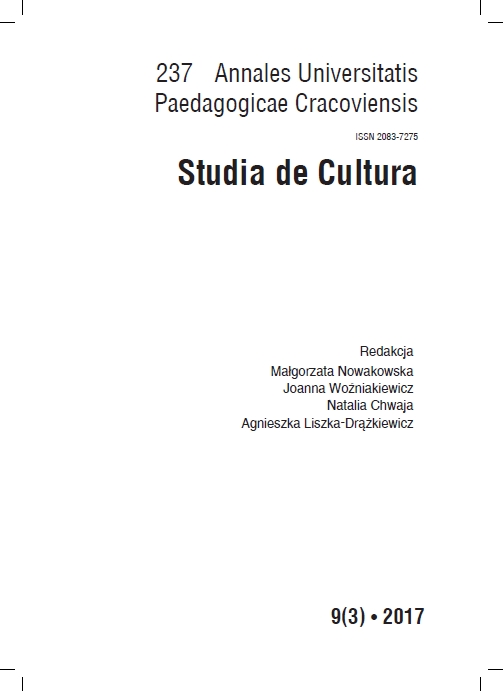Abstrakt
Questo contributo intende analizzare le proprietà di alcune combinazioni di parole della lingua italiana, rappresentate da strutture riempite solo parzialmente da unità lessicali. Attraverso l’analisi di dati estratti da corpora, il contributo si propone di a) identificare e analizzare alcuni formati parzialmente riempiti dell’italiano emersi durante la stesura del dizionario combinatorio CombiNet, b) classificare tali unità sulla base di specifiche proprietà sintattiche o semantiche, c) mostrare una possibile rappresentazione lessicografica di tali formati di parola.
Kombinacje słów częściowo wypełnione. Formacje oraz reprezentacja leksykograficzna
Niniejszy artykuł ma na celu przeprowadzenie analizy właściwości niektórych kombinacji słów w języku włoskim przedstawionych za pomocą struktur, które zostały „wypełnione” jedynie w sposób częściowy przez jednostki leksykalne. Artykuł, poprzez analizę danych uzyskanych z korpusów, proponuje: a) identyfikację oraz analizę niektórych formacji częściowo wypełnionych w języku włoskim, które zostały zidentyfikowane podczas sporządzania słownika kombinatorycznego CombiNet; b) klasyfikację danych jednostek na podstawie określonych właściwości syntaktycznych bądź semantycznych; c) przedstawienie możliwej reprezentacji leksykograficznej danych formacji słów.
Bibliografia
Baroni M., Bernardini S., Comastri F., Piccioni L., Volpi A., Aston G., Mazzoleni M. 2004. Introducing the La Repubblica corpus: a large, annotated, TEI(XML) – compliant corpus of newspaper Italian, [in:] Proceedings of the Fourth International Conference on Language Resources and Evaluation, a c. di M.T. Lino, M.F. Xavier, F. Ferreira, R. Costa, R. Silva, Paris: 1771–1774.
Zobacz w Google Scholar
Bybee J. 2010. Language, Usage and Cognition, Cambridge.
Zobacz w Google Scholar
Bybee J., Thompson S. 1997. “Three Frequency Effects in Syntax”. Berkeley Linguistic Society 23: 65–85.
Zobacz w Google Scholar
Castagnoli S., Lebani G.E., Lenci A., Masini F., Nissim M., Piunno V. 2015. Towards a corpus-based online dictionary of Italian Word Combinations Automatic Knowledge Acquisition for Lexicography, COST ENeL WG3 meeting, Herstmonceux Castle, 13 August 2015. www.elexicography.eu/wp-content/uploads/2015/10/.
Zobacz w Google Scholar
Castagnoli S., Lebani G.E., Lenci A., Masini F., Nissim M., Passaro L.C. 2016. POS-patterns or Syntax? Comparing methods for extracting Word Combinations, [in:] Computerised and Corpus-based Approaches to Phraseology: Monolingual and Multilingual Perspectives (Full papers) – Fraseología computacional y basada en corpus: perspectivas monolingües y multilingües (Trabajos completos), a c. di G. Corpas Pastor, Geneva: 101–114.
Zobacz w Google Scholar
Fillmore C.J., Kay, P., O’Connor, M.C. 1988. “Regularity and idiomaticity in grammatical constructions: the case of let alone”. Language 64: 501–38.
Zobacz w Google Scholar
Gross G. 1996. Les expressions figées en français, Paris.
Zobacz w Google Scholar
Lamiroy B. 2003. “Les notions linguistiques de figement et de contrainte”. Lingvisticae Investigationes 26 (1): 1–14.
Zobacz w Google Scholar
Lenci A., Lapesa G., Bonansinga G. 2012. LexIt: A Computational Resource on Italian Argument Structure, [in:] Proceedings of the Eight International Conference on Language Resources and Evaluation (LREC’12), Istanbul, ELRA: 3712–3718.
Zobacz w Google Scholar
Masini F. 2013. Parole sintagmatiche in italiano, Cesena, Caissa Italia.
Zobacz w Google Scholar
Mejri S. 1997. Le figement lexical. Descriptions linguistiques et structuration sémantique, Tunisie.
Zobacz w Google Scholar
Passaro L.C., Lenci A. 2016. Extracting Terms with EXTra, Paper presented at EUROPHRAS 2015 – Computerised and Corpus-based Approaches to Phraseology: Monolingual and Multilingual Perspectives. Malaga, 29 June–1 July 2015.
Zobacz w Google Scholar
Piunno V. 2013. Modificatori sintagmatici con funzione aggettivale e avverbiale, Tesi di dottorato, Roma.
Zobacz w Google Scholar
Piunno V. 2015. “Sintagmi Preposizionali come Costruzioni Aggettivali”, Studi e Saggi di Linguistica 53 (1): 65–98.
Zobacz w Google Scholar
Piunno V. 2016a. “Multiword Modifiers in Romance languages. Semantic formats and syntactic templates”. Yearbook of Phraseology, Berlin 7: 3–37.
Zobacz w Google Scholar
Piunno V. 2016b. CombiNet. A Corpus-based Online Database of Italian Word Combinations, GLOBALEX 2016: Lexicographic Resources for Human Language Technology, LREC2016, Portorož, 24 maggio 2016: 45–51.
Zobacz w Google Scholar
Sechehaye A. 1950 [1926]. Essai sur la structure logique de la phrase, Collection linguistique 20, Paris.
Zobacz w Google Scholar
Simone R. 2006. Nominales sintagmáticos y no-sintagmáticos, [in:] Estructuras léxicas y estructuras del léxico, red. E. De Miguel et al., Frankfurt am Main, Peter Lang: 225–246.
Zobacz w Google Scholar
Simone R. 2007. Constructions and categories in verbal and signed languages, [in:] Verbal and Signed Languages. Comparing Structures, Constructs, and methodologies, red. Pietrandrea P. et al., Berlino–New York: Mouton-De Gruyter: 198–252.
Zobacz w Google Scholar
Simone R., Piunno V. 2017. “Combinazioni che costituiscono lemma. Fenomeni, rappresentazione lessicografica e aspetti lessicologici”, Studi e saggi linguistici 55 (2): 13–44.
Zobacz w Google Scholar
Tutin A., Grossmann F. 2002. “Collocations régulières et irrégulières: esquisse de typologie du phénomène collocatif”, Revue française de Linguistique appliquée 7 (1): 7–25.
Zobacz w Google Scholar
Voghera M. 1994. “Lessemi complessi: percorsi di lessicalizzazione a confronto”, Lingua e Stile 29 (2): 185–214.
Zobacz w Google Scholar
Voghera M. (2004. Polirematiche, [in:] La formazione delle parole in italiano, M. Grossmann, F. Rainer, Tübingen, Max Niemeyer Verlag: 56–69.
Zobacz w Google Scholar

